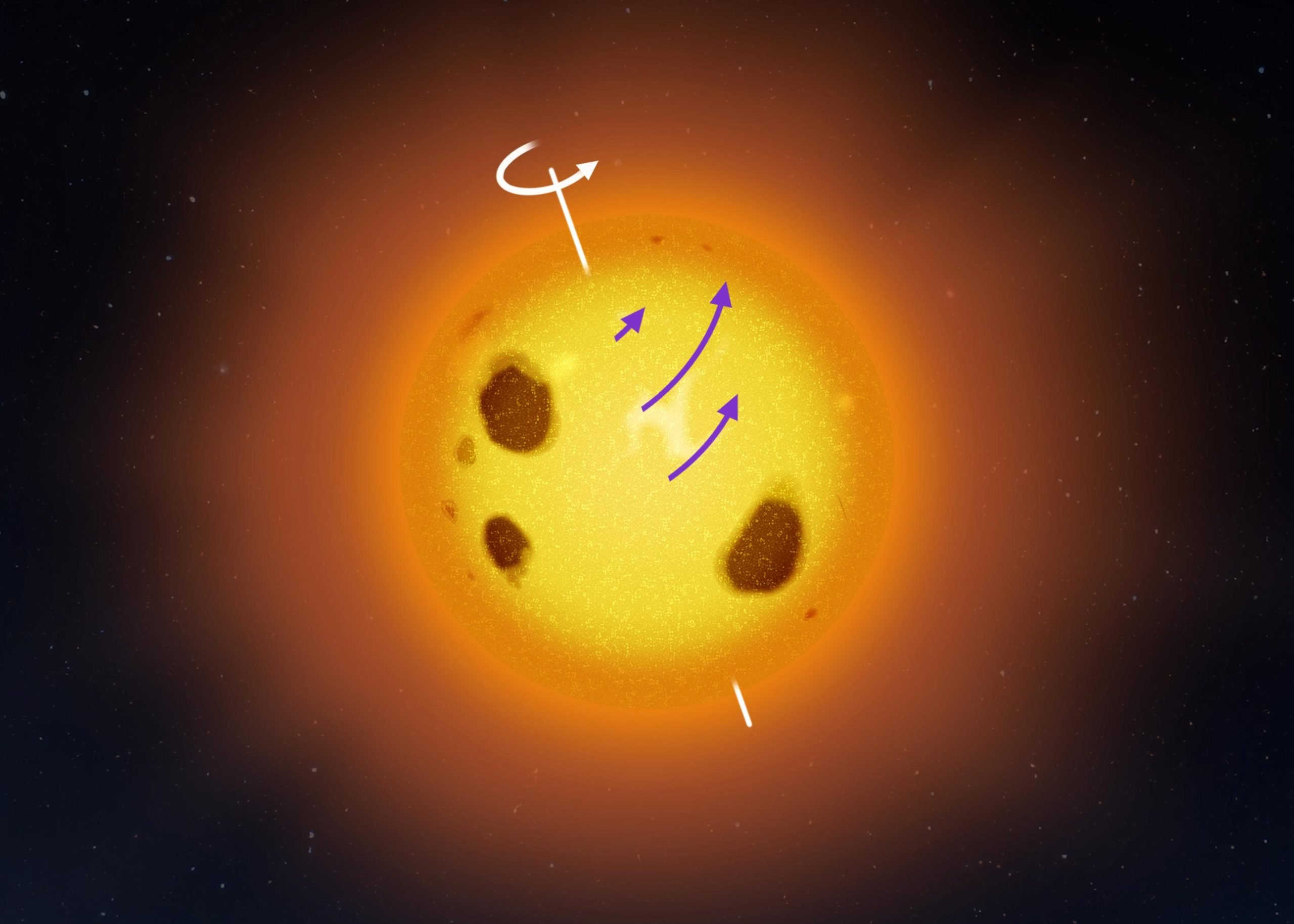A nearby star V889 Herculis rotates the fastest at a latitude of about 40 degrees. This unconventional rotational profile challenges established stellar models. Credit: Jani Närhi, University of Helsinki
Researchers at the University of Helsinki have discovered that the star V889 Herculis rotates in a way that is unlike our Sun.
While the Sun spins fastest at its equator, V889 Herculis rotates fastest at a latitude of about 40 degrees. This unique finding helps scientists better understand the complexities of how stars like the Sun operate, specifically in terms of surface activity like sunspots and solar eruptions.
Unusual Stellar Rotation Observed in V889 Herculis
The Sun rotates the fastest at the equator and the rotation rate slows down at higher latitudes, becoming the slowest in the polar regions. But a nearby Sun-like star V889 Herculis, some 115 light-years away in the constellation of Hercules, rotates the fastest at a latitude of about 40 degrees, while both the equator and polar regions rotate more slowly.
A similar rotational profile has not been observed for any other star. The result is stunning because stellar rotation has been considered a well-understood fundamental physical parameter but such a rotational profile has not been predicted even in computer simulations.
“We applied a newly developed statistical technique to the data of a familiar star that has been studied in the University of Helsinki for years. We did not expect to see such anomalies in stellar rotation. The anomalies in the rotational profile of V889 Herculis indicate that our understanding of stellar dynamics and magnetic dynamos is insufficient,” explains researcher Mikko Tuomi who coordinated the research
Dynamics of a ball of plasma
The target star V889 Herculis is much like a young Sun, telling a story about the history and evolution of the Sun. Tuomi emphasizes that it is crucial to understand stellar astrophysics in order to, for instance, predict activity-induced phenomena on the Solar surface, such as spots and eruptions.
Stars are spherical structures where matter is in the state of DOI: 10.1051/0004-6361/202449861





















Discussion about this post